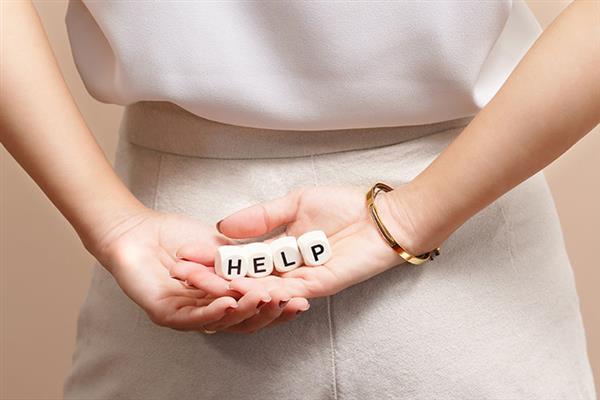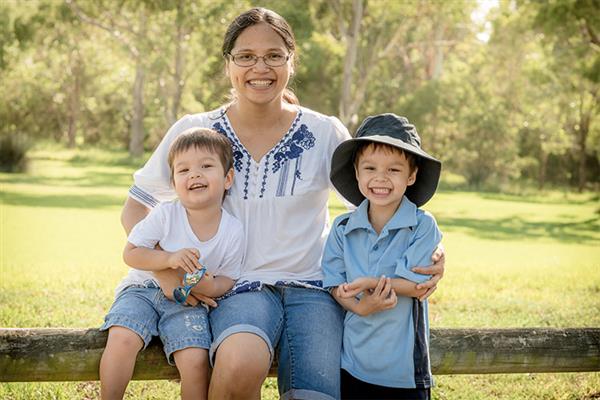Please note this story includes information about Domestic and Family Violence which may cause distress. You can reach out to the Domestic violence crisis lines at 1800 RESPECT (1800 737 732) or the Domestic Violence Hotline (1800 65 64 63) if you need immediate support.
Domestic and family violence (DFV) is a huge contributor to Australia’s overall disease burden. Not only is it the greatest health risk for women aged 25-44, but the emotional, developmental and health consequences for children growing up with DFV are equally as serious. What’s more, its effects on broader society are complex, far-reaching, and profound.
We spoke to the team from The Benevolent Society’s Centre for Women's, Children's and Family Health (CFWCFH), a Campbelltown-based centre, which supports women of all ages and their children who are experiencing or have experienced domestic and family violence, sexual assault, sexual abuse and other complex trauma and life-stage transitions. Every day they walk alongside women to support them in healing, recovery and making sense of their trauma. The team shed light on why DFV isn't a "women's issue", but a public health concern.
"The levels of domestic and family violence in our society are completely unacceptable," says Kelly Lester, Senior Practitioner at the CFWCFH. "When you look at mental health issues, the criminal justice system, housing, physical illnesses, all kinds of things, often domestic and family violence is happening behind the scenes."

Of course, the long-term social, physical, psychological and financial weight of abuse falls on victim-survivors, but it's implications are significantly felt by friends, families, employers and coworkers. The numbers also reflect the vast community space DFV occupies. A report prepared by KPMG estimated the total cost of violence against women
and their children at $22 billion in 2016, and factoring in underrepresented groups may add $4 billion to that total. Today's violence rates are just as alarming.
"This is a national crisis," Kelly urges.
Could you recognise domestic and family violence?
If the phrase "domestic violence" conjures up a mental image of a man causing a woman (usually his partner/wife) physical injury behind closed doors, you're not alone. But in reality, DFV is insidious and wears many faces (a woman sporting a black eye being only one of them).
"Domestic and family violence can involve financial and economic abuse, social isolation, degradation and emotional abuse, coercion through fears around the use of manipulation of children, threats around systems, or even threatening self-harm to control a partner," explains Nicole, a Senior Practitioner at the CFWCFH.
Even in the absence of a direct physical threat, this coercion can become life-threatening.
"If there's been long term psychological patterns of control we may not see physical violence until the moment the woman decides to leave. So, physical violence doesn't equal risk – the intensity of the control does," she says.

And when looking at methods of control, Kelly tells us that perpetrators can get very creative.
"Some treat it like a full-time job. When they get blocked from phones, they might transfer $0.02 through online banking and use the message description as an opportunity to abuse their partner," she says.
In one instance, Kelly knew of a father who alienated his wife by not allowing her to feed their children. "He would lock up the food, go to work, then come home at lunch to feed them himself. It's just pervasive," she says.
Children are victims, too.
Our team at the CFWCFH have seen how growing up with DFV in the home compromises the health and wellbeing of children, whether or not they've been the direct target of physical abuse. In the classroom, a child's experience of trauma at home may manifest as poor school performance, difficulties with emotional regulation or strained peer interactions leading them to be misdiagnosed with conditions like ADHD. Kelly believes it's crucial that courts recognise that children aren't merely bystanders of violence, but victims in their own right.

"What isn't understood is that the mother's experience of violence is also the child's experience of violence. It affects children and women in multiple, complex ways, including disrupting the relationship between child and mother. Systems need to support that relationship being repaired in order for the child to have a better chance in life," she explains.
The way forward
The team at the CFWCFH believe that more public systems need to be domestic violence informed to offer the right supports, and that primary prevention is non-negotiable in genuinely addressing this epidemic. For this reason, it will become a critical focus at the Centre in over the next five years.
“As trauma practitioners who work with people in the aftermath of abuse primary prevention is part of our scope, so we're looking at participating in the Love Bites Program this year,” explains Samantha, one of the Centre’s counsellors. Samantha has been leading the charge to work in schools to deliver more programs that champion healthy relationships.
“We’re starting to put our trauma informed lens onto that so we can offer more support to the educators and families in the area,” she says.
Although systemically Australia has a long way to go, the fact that consent education is becoming mandated in schools country-wide from 2023 means these conversations will circulate more and more. And beyond inviting everyone in on them, it is time for action.
“Parents of boys have a massive opportunity to change the trajectory of our community. There are plenty of opportunities for change,” Kelly insists.

Outside education, the team say we can make a difference every day by learning about how people experience complex trauma and by taking a stand if we suspect abuse (if it's safe to do so). Nicole points to a few questions you can ask yourself if you’re worried about someone.
“Are they showing symptoms of anxiety and depression? Are they withdrawing from social engagements or only going to places with their partner? Are they struggling with access to money?” she offers.
"We're at a point where it's no longer just women's business, it is a shared responsibility across all walks of life and all genders,” Samantha says.
If you believe you/someone you know may be at risk it’s vital to break the silence and speak to a friend, safe person, or enlist the help of a professional service. Domestic violence crisis lines such as 1800 RESPECT (1800 737 732) or the DV Hotline (1800 65 64 63) are useful starting points for victim-survivors to access professional support and get more information on what local services are available. Or call us on 1800 236 762 to enquire about the CFWCFH's integrated support services.
Although DFV is predominantly affects women and children, support for men is available (for both victims and perpetrators). Call MensLine Australia on 1300 78 99 78 for help and information. If your own/a friend’s behaviour raises any reg flags, find out more about a free voluntary program for men, Changing for Good https://mensline.org.au/changingforgood/.